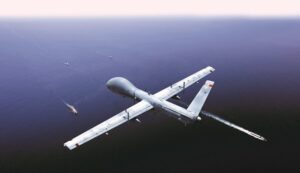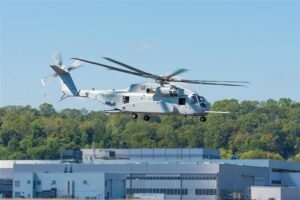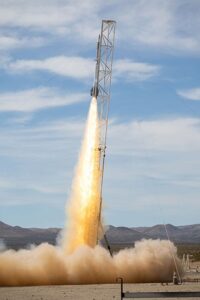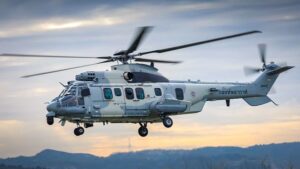Testing of AI powered SAR ATR will continue over the course of the year
Lockheed Martin has achieved a major breakthrough in AI and airborne surveillance with the potential to detect and track maritime targets with unprecedented accuracy. In a recent flight test on the west coast of the United States, Lockheed Martin engineering teams successfully demonstrated technology to automatically recognize targets using an AI-powered Synthetic Aperture Radar (SAR) with embedded sensor control autonomy.
SAR is a gold standard technology for imaging targets at sea, like warships, but traditionally requires manual interpretation of images. AI unlocks the full potential of SAR for enhanced object detection with faster, more accurate and automated image analysis. By leveraging AI-powered SAR target recognition, warfighters will be able to quickly differentiate a combatant vs. civilian vessel without the need for manual analysis.
“This is a major leap for harnessing AI to help enhance situational awareness and decision-making capabilities, with unparalleled threat identification across extended ranges and all-weather conditions,” said John Clark, senior vice president of technology and strategic innovation at Lockheed Martin. “We are committed to continuing to advance this capability, including data integration from multiple sensors, to create more accurate insights and help the warfighter make informed decisions in the maritime battle space.”
This groundbreaking achievement, developed by the Lockheed Martin AI Center (LAIC), Skunk Works, and Rotary Mission Systems (RMS) team, is a significant advancement of situational awareness in maritime target recognition.
In the demonstration, the SAR Automatic Target Recognition (ATR) capability, enabled by Machine Learnings Operations (MLOps) tools for rapid retraining, successfully classified targets of interest in near real-time. SAR ATR was coupled with autonomous sensor control, which re-tasked the radar in real time based on target detections. This capability was deployed on low Size, Weight, and Power (SWaP) hardware in the field, rapid edge processing, without the need for large cloud compute or ground stations.
Data collected during these flight tests will be used to develop and mature multiple Lockheed Martin autonomous systems, including collaborative combat aircraft and family of systems applications.







